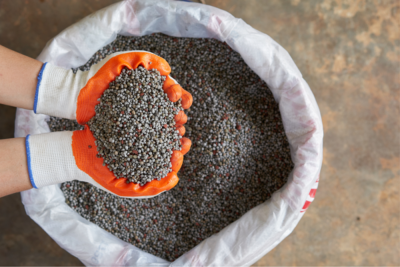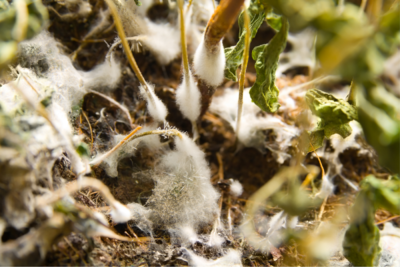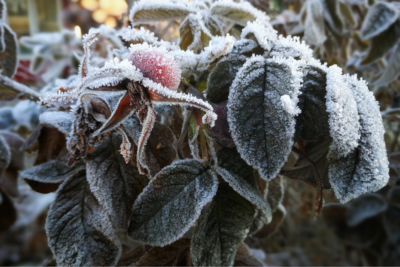
It happened.
Your cactus/pothos/philodendron/succulent died after you had worked so hard on making sure it had the perfect environment to grow in.
It’s okay.
I have done the same. I have even killed plants that people say are “easy” or “indestructible.” If you ask anyone who has collected plants, they will say the same thing—even the most prominent gardeners in the world. But why did my plant die? You could have had everything just right for your said plant; you were watering it the necessary amount, gave it the proper lighting, planted it into the suitable soil, but unfortunately, the plant still passed away. So what happened? There are different reasons plants might die, and I will review them here. Hopefully, this awareness will help to provide your plants with the best chance possible for success!

Overwatering:
I have killed many plants by overwatering them. Even cacti, which are noted for being “easy” to take care of. Every plant has its watering schedule, and most need to be adhered to if you want to keep your plant healthy – or alive. Overwatering causes root rot, which breaks down the roots. Roots are so essential to plants, and when they fade away, the plant will follow too. To avoid overwatering, practice two things; marking water days in your calendar and checking the soil. Every plant has its set watering times, write them down in your calendar or set a timer on your devices. Check your soil using a pen, chopsticks, or toothpick to see if the soil is still damp under the topsoil. If dirt sticks to the item, your plant can stand to wait another day to be watered.

Underwatering
Ms. Kate, didn’t we discuss this? Yes and no. Underwatering is just as fatal as overwatering. It causes stress to plants non-drought based. For example, peace lilies LOVE to have their soil nice and moist. If they go too long without water, their leaves crisp up and die, a show of stress. Think of it this way. We drink water to stay hydrated. If we go a couple of days without it, our bodies get dehydrated, and our health is jeopardized. A tip I like to use when identifying underwatering, is watching the leaves. If they are wrinkling or drooping, they are in need of water.

Rootbound
Rootbound occurs when your plants don’t have enough space to extend their root systems, causing roots to get tangled up in each other and draining the energy from the plant. The signs of being rootbound are when your plant is no longer reacting to its appropriate light or water. To correctly identify, take your plant out of its pot. If the roots are entangled, it is time to repot. If your plant does not react to its new setting, you may need to untangle the roots manually.

Fertilizer
Fertilizer is beneficial to plants, especially when it is their growing season. However, if you give a plant too much fertilizer, it can overwhelm them. Too much can stunt their growth, cause them to be susceptible to diseases, and even lead to their death. How can you tell you have over-fertilized your plant? The leaves may wilt, yellow or brown, the leaf margins and roots may also brown or blacken. To fix this, take your plant out of that soil, flush the roots with room temperature water, and then repot it.

Mold
Eww, right? Mold grows when they have two things, organic material, and a wet surface. This occurs on plants that enjoy moisture like nerve plants, calathea, bamboo, begonias, and peace lilies. Mold can weaken the plant and, if not treated, can overwhelm it as well. If the plant is starting to look frail, change them into a new pot and fresh soil. It is essential to get the affected soil out of the roots to avoid any more infection.

Venting
I have almost lost plants to ventilation systems. Even though air conditioning is a necessity for us, it is the opposite for our leafy friends. The cold air freezes the plant cells of plants, stopping the nutrition that would have been passed through the plant and causing decay. If you catch it early, move your plant to a safer location, or if you don’t have another, close the vent if you do not need it open. The tells of ventilation affecting your plants are healthy leaves falling and yellowing roots. In this situation, you have to be quick to act!

Bacteria
Bacteria can live anyway, even in your plant’s soil. It is caused by overwatering and is shown by your plant not reacting to light or water. To officially diagnose, check your plant’s roots. If they are brown or mushy, repot your plant immediately to save the rest of your roots. Get the soil off the roots and monitor your plant for any other signs of damage or decay.

Sun
Mr. Sun can pack significant heat. We know how severe it can be if we forget to wear sunscreen on a hot day! The same thing happens to plants. If you leave your plant’s in direct light for too long, it can be sunburned, overcompensate with so much energy from the said Sun, and after a few days, will dry out. This is not the case for cacti or succulents, which are built for direct light. But to avoid frying your plant, monitor their leaves and move them if they are getting too much light.
As you can see, many reasons can harm your collection. We make mistakes with water, fertilizer, and placement. There is a lot that goes behind the pot, so to speak, and there are times where you do everything you can to save your plant, and sometimes, we can’t, and that is okay. It is all part of the process. It is not your fault. We are always learning something new with gardening with collection veterans and the latest arrivals. Practice makes perfect, and you all are doing great taking care of your plants. For more information on keeping your plants healthy, here are some resources:





